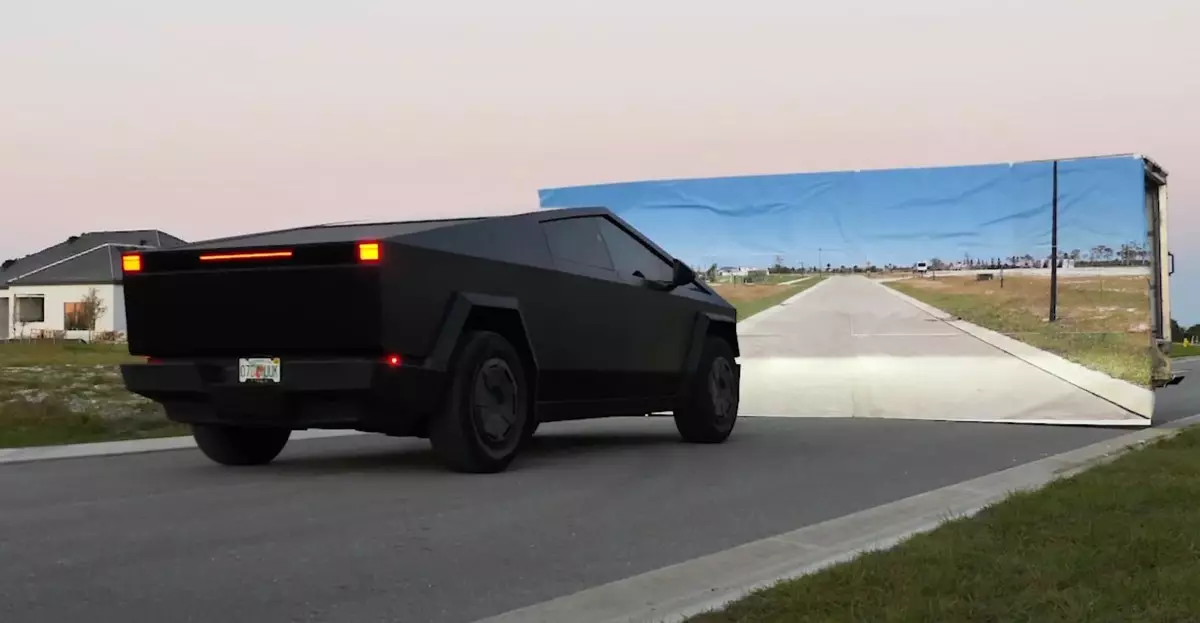The automotive landscape is buzzing with excitement as electric vehicle enthusiasts engage in a pivotal discussion about Tesla’s Full Self-Driving (FSD) technology. The intrigue was sparked by a YouTuber named Mark Rober, well-known for his entertaining yet informative videos, who conducted a rather whimsical “Wile E. Coyote” test. This experiment aimed to assess whether Tesla’s FSD features could halt a vehicle before it catastrophically collided with a wall that mimicked an illusionary road. While Rober’s entertaining approach caught attention, it has stirred a cocktail of skepticism and curiosity about the real-world capabilities of Tesla’s touted autonomous driving technology.
A Tale of Two Teslas: FSD in Action
Following Rober’s viral experiment, fellow content creator Kyle Paul stepped up to offer a comparative examination, hoping to shed more light on the FSD capabilities of two specific Tesla models: the Model Y and the newly introduced Cybertruck. Paul’s video tested the performance of the vehicles’ FSD systems, utilizing both the older HW3 model and the latest HW4 technology, while attempting to ascertain their response to the fictitious roadblock. The results were striking: the Model Y, equipped with a well-documented version of FSD, was unable to avoid the wall. This raises pressing questions about Tesla’s claims of autonomy.
Critics may argue that the landscape of technological testing should involve more rigorous scrutiny, and rightly so. The importance of these tests cannot be overstated, especially when consumer safety is at stake. While Rober’s playful approach introduced a captivating narrative, it may have glossed over critical details of the FSD system’s limitations in operational scenarios. The human element—Paul’s manual stop to prevent a crash—adds a layer of realism that challenges the merit of fully autonomous driving claims.
A Silver Lining: The Cybertruck’s Performance
On a more positive note, Paul’s test of the Cybertruck showcased a glimmer of hope in Tesla’s pursuit of a robust FSD system. In this segment of the experiment, the Cybertruck successfully detected the replica wall and decelerated appropriately, symbolizing a significant leap forward in terms of safety and technology. This dichotomy between the two tests embodies the complexities of AI-driven systems, revealing that progress may not be linear but rather fraught with anomalies and unexpected outcomes.
The contrast between the two results—one disappointing and one somewhat reassuring—gives rise to another question: how can Tesla developers ensure that lessons learned from such informal trials translate into real-world application? A singular impressive demonstration does not absolve the brand from continued scrutiny and improvement. Each test, each minor success, contributes to the broader narrative around FSD technologies and their eventual market readiness.
The Road Ahead: Balancing Optimism with Caution
The ongoing public discourse surrounding Tesla’s FSD capabilities provides fertile ground for considerations about innovation, safety, and consumer faith in autonomous driving technology. While these amusing YouTube experiments may draw attention and generate conversation, they also highlight essential dilemmas. Enthusiasts and skeptics alike must remain attentive, as the pursuit of autonomous technology evolves with each new test and iteration. Balancing the thrill of innovation with the reality of current functionality is paramount; the future of travel depends on it.

